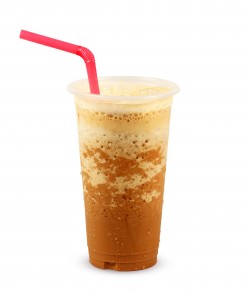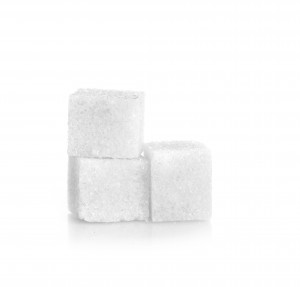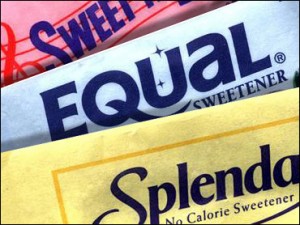 Sugar Addiction is real.
Sugar Addiction is real.
Are you a victim? This article, from Women’s Health Magazine clearly and succinctly addresses the problem. Read on…
Are you high? Before you say no, consider what you’ve put in your mouth lately. If it includes anything from rainbow-colored cereal and caramel Frappuccinos to cold cuts and ketchup, there’s a decent chance you’re riding a sugar rush right now. Don’t feel bad–just about every person in America is buzzed with a sugar addiction. Research shows that nearly a quarter of our daily caloric intake–325 calories on average–comes from sweets like baked goods, desserts, soda, and fruit juices. In other words, from sugar.
Now feel the rush…
Sweet treats are bad news because they typically deliver a load of calories with little to no nutrition. A more troubling fact: As our consumption of the white stuff rises, so do the numbers on our scales. A study published in the Annual Review of Nutrition analyzed American diets and found that from 1970 through 2000, daily caloric intake among women ages 20 to 39 jumped from 1,652 to 2,028. But get this: Over the same period, the percentage of calories we were getting from fats and protein decreased. Only the amount of carbs–particularly sugar–shot up. On average, each of us scarfs 25 pounds more sugar annually than women did back when American Bandstand started airing in color. There’s no dancing around it: Sugar is a huge part of what’s making us fat.
Now brace yourself for two more nasty news flashes: (1) Eating too much sugar can stoke your appetite rather than satisfy it, and (2) it can even become addictive–no surprise to those of us who have a daily 3 p.m. Snickers jones so strong we might be tempted to hurl an office chair at the vending machine if we ever ran out of change. But don’t despair, gummy-bear lovers: There’s light at the end of this frosted, candy-coated tunnel. With a little determination, you can train yourself to stop craving sugar. And when you do, you’ll experience something truly sweet: weight-loss success.
 Sweet and Vicious
Sweet and Vicious
The newest threat to our waistlines actually has been decades in the making. In fact, we can pinpoint exactly when the sugar time bomb started ticking: 1967, the year high-fructose corn syrup, the first scientifically engineered sugar, was created. A combination of fructose and glucose, HFCS is a clear, sticky liquid with the consistency of maple syrup that can be cheaper to manufacture and sweeter than natural, cane-derived sugar (1.16 times sweeter, to be exact). That means food companies can use less (though they still use a lot) to achieve the same degree of sweetness, which translates to bigger profits. Beverage companies in particular started buying the stuff by the ton. Over the years HFCS also began replacing the sugar in cereals, granola bars, and even flavored yogurt. In 1970 HFCS accounted for less than 1 percent of all sweeteners consumed in America. By 2000, after countless fat-free products were pumped full of sugar to improve their taste, that figure had risen to 42 percent. Now, HFCS accounts for half of all sweeteners, and the United States is both the largest producer and consumer of HFCS in the world.
Manufacturers currently use the taste-bud-pleasing stuff to flavor a huge variety of products, including foods that wouldn’t normally contain sugar and that you probably wouldn’t describe as sweet, like the sesame seed bun on a McDonald’s hamburger, or the Saltine crackers you crumble into soup. Even if you vigilantly shun the sugar bowl and never let a piece of candy cross your lips, you could still be eating a diet loaded with sugar from stealth sources. According to a 2008 USDA report, more than 57 percent of all the sugar on the market is purchased by the food and beverage industry to flavor consumer products, and sweeteners (fructose, sucrose, glucose, and HFCS) are the No. 1 food additive. If you eat without carefully checking food labels and restaurant websites for nutrition information, you may inadvertently be pouring sugar down your throat. Where does it all end up? Yep, right in that jiggly jelly roll hanging over your jeans.
 Taking Our Lumps
Taking Our Lumps
Even when you’re perfectly aware that your favorite brand of peanut butter is spiked with sugar, buying the unsweetened kind can feel like a major sacrifice of taste and texture. And that’s just peanut butter–think of all the other sweet indulgences that are hard to resist: a croissant on the way to work, a handful of M&Ms, the candy-flavored cocktail in the sugar-rimmed glass at happy hour. There’s a reason you keep coming back for more: You’ve got a habit.
In a 2005 study in Physiology & Behavior, a group of Princeton researchers led by psychology professor Bart Hoebel, Ph.D., found that eating sugar triggers the release of opioids, neurotransmitters that activate the brain’s pleasure receptors. Addictive drugs, including morphine, target the same opioid receptors. “Sugar stimulates receptors to activate the same pathways that are stimulated directly by drugs such as heroin or morphine,” Hoebel says.
When this phenomenon was studied in lab rats, Hoebel’s students found that after 21 days on a high-sugar liquid diet, one group, whose feeding was delayed by 12 hours, showed signs of withdrawal, including anxiety, teeth chattering, and depression. While no human trials have been conducted yet, researchers hypothesize that sugary drinks, especially those consumed on an empty stomach, are similarly addictive for some individuals. So if you regularly replace breakfast with a sweet coffee drink, you could be setting yourself up for a sugar addiction.
By constantly eating sugar, you also force your pancreas to work overtime. As you eat more, it pumps out massive amounts of insulin; eventually, your body may become less sensitive to sugar and, essentially, build up a resistance to it. Just as a frequent drinker needs to knock back more beers in order to feel their effects, you can begin to need more sugar to feel satisfied.
The Replacements
And if getting too many calories is what worries you, reaching for a Sprite Zero isn’t the solution: Artificial sweeteners may be almost as bad for you as HFCS. In 2004, a study published in the International Journal of Obesity found that rats ate more after consuming an artificially sweetened drink than they did after sipping sugar water. Researchers speculate that calorie-free artificial sweeteners act like stomach teasers: As you swallow diet soda, your body anticipates the arrival of calories. When they don’t show up, your body sends you looking elsewhere for them, often in a snack bowl. A 2005 study by researchers from the University of Texas found that people who drank a can of diet soda per day had a 37 percent greater incidence of obesity. And because artificial sweeteners are often many times sweeter than sugar, stirring a teaspoonful into your daily cup of joe may mean that when you do use real sugar, it just doesn’t taste sweet enough for you, sending you grabbing extra sugar packets.
Take our sugar quiz— and see if you can find where the white stuff may be lurking in your food.\
 Stopping the Domino Effect
Stopping the Domino Effect
Here comes the hard-to-swallow truth: The only way to curb a sugar habit is to cut back drastically. It will be rough in the beginning, but your body will crave sugar less as it regains its insulin sensitivity. In order to extract your sweet tooth, you first need to know how much sugar you’re actually eating. There are plenty of hidden sources of sugar and, as Connie Bennett reports in her book, Sugar Shock!, more than 100 names for sweeteners. Take note of sugar’s pseudonyms and look for red-flag ingredients like dextrose rice syrup, and cane juice. Read labels for a week and jot down how much sugar you’re taking in–you’ll probably find that it far exceeds the approximately 10 percent of your daily caloric intake the federal dietary guidelines recommend (that’s about 20 grams, or five teaspoons, per 1,000 calories consumed).
You’ll also realize that many products touted as healthy are still high in sugar. There are no laws regulating the use of the words “all natural” on food packaging, so manufacturers can label their products with abandon. “‘All natural’ is a really misleading term, and it does not necessarily imply that a product is low in sugar,” Bennett says. Even if sweeteners do come from all-natural ingredients, they can be highly concentrated, as they are in dried fruit. One ounce of dried pineapple has about 21 grams of sugar, compared with 2.6 grams for the same amount of fresh pineapple. So watch your portions of trail mix.
Once you know how much sugar you’re really eating, you can control your intake.
Here are the pros’ tips for cracking down on the most seductive tabletop substance known to man:
- Eat breakfast “Ninety percent of sugar addicts skip breakfast,” says Kathleen DesMaisons, Ph.D., author of Potatoes Not Prozac. “They wait and get a big hit of sugar at 10 a.m.” When you eat breakfast, you prevent the drop in blood sugar that makes you crave sugar later.
- Pick fruit Satisfy your sweet tooth with apples, bananas, and berries, which temper natural sugar with fiber and loads of antioxidants, says Elisa Zied, M.S., R.D., a spokesperson for the American Dietetic Association and the author of Feed Your Family Right!
- Think 100 When you simply must have a cupcake or a candy bar, stick to 100- to 150-calorie portions and 16 grams of sugar or less.
- Indulge right after dinner Late-night ice cream fixes give you a pure, unadulterated sugar rush. Have a small scoop soon after dinner instead and you’ll reduce (though not counter) the insulin-spiking effect, DesMaisons says.
- Cut out “overt” sugars Tackle the worst offenders first: sucrose-laden treats like candy, frappuccinos, ice cream, and soft drinks. If you drink a soda every day, try having one every other day, then once a week, then not at all.
- Enter sugar rehab Like any addict, you need to detox before you can fully recover. According to DesMaisons, it takes five days to fully overcome your cravings for sugar, and you’ll feel awful for three of them. Prepare to be edgy and irritable starting on day two; by day five, you’ll feel like a whole new person. After you’ve recovered, you’ll find that a little sugar goes a much longer way.
 Of course, as a former sugar addict, I can help you as well. Don’t miss our FREE T School SUGAR, STRESS & HORMONES workshop, Saturday, Sept 12th at 11:30 Am.
Of course, as a former sugar addict, I can help you as well. Don’t miss our FREE T School SUGAR, STRESS & HORMONES workshop, Saturday, Sept 12th at 11:30 Am.
Losing fat is not easy, or I would not have a job! I’ve have proven success and want to share that with you.
Reservations are suggested but not required. Questions? Email us at info@pilates1901.com
Oh, and did I mention, it’s FREE? It is, it’s Free!
Leave a Reply